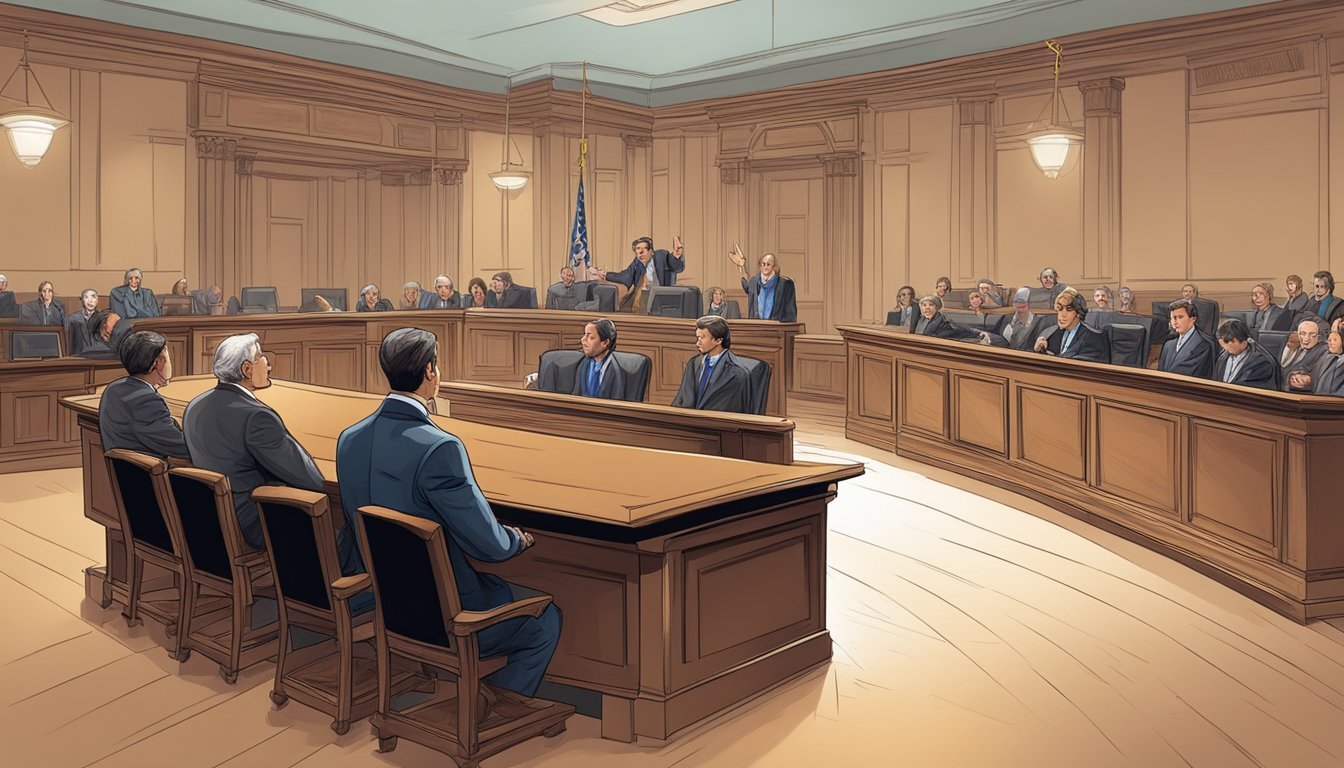The Blood of Innocents by Guy Reel: A Chilling Exploration of True Crime
"The Blood of Innocents" by Guy Reel delves into a horrific true crime case that shook West Memphis, Arkansas in 1993. The book recounts the brutal murders of three 8-year-old Cub Scouts who were found dead in a wooded area known as Robin Hood Hills. Reel, along with co-authors Marc Perrusquia and Bartholomew Sullivan, provides a detailed account of the investigation and subsequent conviction of three local teenagers for the crimes.
This compelling true crime narrative explores the events surrounding the murders, the community's reaction, and the legal proceedings that followed. The authors, who covered the case as it unfolded, offer readers an insider's perspective on the shocking and controversial story that captivated national attention.
"The Blood of Innocents" examines the evidence, the suspects, and the impact of these heinous crimes on the small Arkansas town. It raises questions about the justice system and the handling of high-profile murder cases, making it a thought-provoking read for true crime enthusiasts and those interested in criminal justice issues.
Author Profile
Guy Reel, the author of "The Blood of Innocents," brings extensive journalistic experience to his true crime writing. His background in reporting and investigative work informs his approach to chronicling real-life events. Reel's career spans several decades and includes other notable publications.
Guy Reel
Guy Reel is an American author and journalist known for his work in true crime literature. He co-authored "The Blood of Innocents" with Marc Perrusquia and Bartholomew Sullivan. The book was published in 2000 and focuses on the West Memphis Three case.
Reel's writing style is characterized by meticulous attention to detail and a commitment to factual accuracy. He approaches sensitive subjects with objectivity, presenting information in a clear and straightforward manner.
Journalistic Background
Reel's career in journalism provided him with the skills necessary for investigative reporting and storytelling. He worked as a reporter for several years before venturing into book writing. His experience includes:
Newspaper reporting
Investigative journalism
Feature writing
This background allowed Reel to develop a keen eye for detail and the ability to synthesize complex information. He applies these skills in his true crime writing, presenting events in a coherent and engaging narrative.
Other Works
While "The Blood of Innocents" is Reel's most well-known work, he has contributed to other publications throughout his career. His writing often focuses on:
Criminal justice issues
High-profile cases
Social impact of crime
Reel's articles have appeared in various newspapers and magazines. He continues to write and contribute to discussions on criminal justice topics. His work demonstrates a consistent interest in exploring the complexities of notable criminal cases and their broader implications for society.
Synopsis
"The Blood of Innocents" by Guy Reel recounts the chilling events of a triple child murder in West Memphis, Arkansas. The book explores the investigation, subsequent trials, and controversial convictions that followed.
True Story Basis
On May 5, 1993, three 8-year-old boys disappeared in West Memphis, Arkansas. Their bodies were discovered the next day in a wooded area known as Robin Hood Hills. The victims - Steven Branch, Michael Moore, and Christopher Byers - had been brutally murdered.
The crime shocked the small community and sparked a massive investigation. Local police, under intense pressure to solve the case, focused on three teenage suspects: Damien Echols, Jason Baldwin, and Jessie Misskelley Jr.
Guy Reel, along with co-authors Marc Perrusquia and Bartholomew Sullivan, meticulously researched the case. They interviewed key players and examined court documents to piece together the tragic story.
Murder in West Memphis
The brutal nature of the killings sent shockwaves through West Memphis. The boys' bodies showed signs of torture and mutilation. Investigators initially suspected a satanic ritual killing due to the crime's gruesome details.
Local rumors and fear fueled speculation about potential suspects. The police investigation quickly centered on Echols, Baldwin, and Misskelley - three teenagers who didn't fit in with the conservative community.
The book delves into the town's reaction to the murders and the intense pressure on law enforcement to find the killers. It explores how fear and prejudice may have influenced the direction of the investigation.
Trial and Error
The trials of the West Memphis Three, as the suspects became known, were highly controversial. Jessie Misskelley Jr. confessed after a long interrogation, but later recanted. His statement was key to the prosecution's case.
Damien Echols and Jason Baldwin were tried together. The prosecution presented circumstantial evidence and emphasized the teens' interest in heavy metal music and occult topics. All three were convicted in 1994.
Echols received the death penalty, while Baldwin and Misskelley got life sentences. The convictions sparked doubt and led to a campaign to free the West Memphis Three. New DNA evidence eventually led to their release in 2011 through an Alford plea.
Context
The 1990s in America saw rising concerns about crime and occult influences, especially in small towns. These fears shaped public reactions to shocking crimes like the West Memphis murders.
1990s America
The early 1990s brought economic uncertainty and social changes to many American communities. Crime rates remained high, peaking in 1991. Small towns felt particularly vulnerable to perceived threats. Rapid technological changes like the growth of the internet created anxiety about children's safety. Conservative religious groups gained political influence, especially in the South. These factors contributed to a climate of fear and moral panic in some areas.
Satanic Panic
The Satanic Panic gripped parts of America in the 1980s and early 1990s. Fears of widespread Satanic ritual abuse emerged, though largely unfounded. Some therapists used suggestive techniques, leading to false memories. Daycare workers faced wrongful accusations of ritualistic child abuse. Heavy metal music and roleplaying games like Dungeons & Dragons were seen as gateways to Satanism. These fears peaked around 1990-1993, influencing how some crimes were perceived and investigated.
Paradise Lost
The 1996 HBO documentary "Paradise Lost: The Child Murders at Robin Hood Hills" brought national attention to the West Memphis case. Filmmakers Joe Berlinger and Bruce Sinofsky followed the trials of the accused teenagers. The film raised doubts about the investigation and convictions. It sparked public interest in the case as a potential wrongful conviction. Two sequels followed, tracking developments in the legal battles. The films galvanized supporters who saw the case as emblematic of rushed judgment during the Satanic Panic era.
The Case Details
The 1993 murders of three young boys in West Memphis, Arkansas shocked the community and led to a controversial investigation and trial. The crime occurred in Robin Hood Hills, with three local teenagers accused and convicted.
Robin Hood Hills
Robin Hood Hills was a wooded area in West Memphis where local children often played. On May 5, 1993, it became the scene of a horrific crime. The area was secluded, with dense trees and a small stream running through it. This location played a crucial role in the case, as it was where the bodies were discovered and where investigators focused their search for evidence.
The Victims
The victims were three 8-year-old Cub Scouts: Steve Branch, Michael Moore, and Christopher Byers. They were last seen riding their bicycles together on the evening of May 5. When they failed to return home, a search was initiated. Their bodies were found the next day in a drainage ditch in Robin Hood Hills. The boys had been beaten, bound, and showed signs of sexual mutilation. The brutality of the crime deeply affected the community and intensified the pressure to find the perpetrators quickly.
The Accused
Three local teenagers were arrested and charged with the murders: Damien Echols, Jason Baldwin, and Jessie Misskelley Jr. They became known as the West Memphis Three. Echols, considered the ringleader, was 18 at the time. Baldwin was 16, and Misskelley was 17. The prosecution's case relied heavily on Misskelley's confession, which he later recanted. The investigation focused on the teens due to their interest in heavy metal music and occult topics. This led to allegations of a satanic ritual killing, despite limited physical evidence connecting them to the crime scene.
Legal Proceedings
The West Memphis Three case involved complex legal proceedings spanning nearly two decades. Multiple trials, appeals, and evolving evidence shaped the course of the investigation and prosecution.
Evidence Review
Police collected physical evidence from the crime scene, including fibers, hair samples, and a knife. Bite mark analysis was performed on one victim's body. Investigators also gathered witness statements and conducted polygraph tests. DNA testing was not widely available at the time of the initial investigation.
The prosecution's case relied heavily on a confession from Jessie Misskelley Jr., one of the accused. However, this confession was later criticized as coerced and inconsistent with crime scene details. No physical evidence directly linked the defendants to the murders.
Trials and Appeals
Damien Echols, Jason Baldwin, and Jessie Misskelley Jr. were tried separately in 1994. Echols and Baldwin were tried together, while Misskelley was tried separately due to his confession. All three were convicted.
Echols received the death penalty. Baldwin and Misskelley were sentenced to life imprisonment. The convictions sparked controversy and led to numerous appeals.
In 2010, new DNA evidence emerged that did not match the defendants. This development, along with other factors, led to a rare legal maneuver called an Alford plea in 2011. The West Memphis Three were released after serving 18 years in prison.
Public Opinion
The case garnered significant media attention and public interest. Documentaries like "Paradise Lost" raised questions about the investigation and trials. Many celebrities advocated for the West Memphis Three's release.
Some believed the defendants were wrongly convicted due to their outsider status and interest in heavy metal music. Others maintained their guilt despite the lack of physical evidence.
Public opinion remained divided. Supporters of the West Memphis Three celebrated their release, while some victims' family members and community members continued to believe in their guilt.
Book Details
The Blood of Innocents by Guy Reel is a true crime book about the West Memphis murders. It provides an in-depth account of the case and investigation.
Publication Information
The Blood of Innocents was published as a mass market paperback on March 1, 2000. It contains 432 pages detailing the shocking murders and subsequent investigation. The book includes 12 pages of photographs related to the case.
Guy Reel authored the book along with co-writers Marc Perrusquia and Bartholomew Sullivan. They were part of the investigative team that covered the story as it was breaking.
The ISBN-13 for the paperback edition is not provided in the search results. The exact dimensions and weight of the book are also not specified.
Editions and Condition
The Blood of Innocents is available in paperback format. Used copies can be found through retailers like ThriftBooks in various conditions.
Good condition copies may show minor signs of wear but remain intact. Fair condition books likely have more noticeable wear. Some copies may be marked as ex-library books.
Softcover editions are available. The search results do not mention hardcover or other format options.
Used copies may have creased spines, worn covers, or other signs of previous ownership. Overall condition can vary significantly between individual used books.
Cultural Impact
"The Blood of Innocents" by Guy Reel sparked significant public interest in the West Memphis Three case. The book's detailed account of the murders and subsequent trials influenced media coverage and public perception.
Media Adaptations
"Paradise Lost," a documentary trilogy, drew inspiration from Reel's work. The films explored the case in depth, bringing renewed attention to the West Memphis Three.
Several other books followed, including "Devil's Knot" by Mara Leveritt. This work further examined the evidence and legal proceedings.
Television shows and podcasts also covered the case, often referencing "The Blood of Innocents" as a key source. These adaptations helped maintain public awareness of the case for years after the initial trials.
Public Perception
Reel's book challenged initial assumptions about the guilt of the accused. It presented alternative theories and highlighted potential flaws in the investigation.
Many readers began to question the verdicts after engaging with the detailed account in "The Blood of Innocents." This shift in perception led to increased advocacy for the West Memphis Three.
Support groups formed, and celebrities began to speak out about the case. The book's impact extended beyond its pages, influencing public opinion and legal discussions.
Continued Interest
"The Blood of Innocents" remains a significant reference for those interested in the West Memphis Three case. True crime enthusiasts continue to discuss and analyze the book's content.
The case has become a touchstone in discussions about wrongful convictions and judicial reform. Reel's work is often cited in these conversations.
Academic studies in criminology and law frequently reference the book. It serves as a case study in how media coverage can influence public perception of criminal cases.
Criticism and Reviews
The Blood of Innocents by Guy Reel has garnered mixed reactions from readers and critics alike. The book's portrayal of the West Memphis Three case has sparked debates about its accuracy and approach.
Literary Analysis
Critics have praised Reel's detailed account of the events surrounding the 1993 murders in West Memphis, Arkansas. The author's journalistic background shines through in his meticulous research and presentation of facts.
Some reviewers note that the book's structure helps maintain reader engagement. Reel's use of short chapters and clear timelines aids in following the complex case.
The writing style has been described as straightforward and accessible, making the true crime narrative digestible for a wide audience.
Reader Reception
Many readers appreciate the book's comprehensive coverage of the case. Online reviews highlight the author's ability to present multiple perspectives on the controversial events.
Some readers express frustration with the lack of a definitive conclusion, reflecting the real-life ambiguity of the case.
A common theme in reader feedback is the book's ability to evoke strong emotional responses. The tragic nature of the crimes and subsequent trials resonates deeply with many.
Experts' Opinions
Legal experts have commented on the book's balanced presentation of evidence. Some praise Reel's effort to avoid sensationalism in his reporting.
Criminologists note the book's value as a case study in investigative procedures and potential pitfalls in high-profile cases.
Some experts criticize the book for not delving deeper into certain aspects of the investigation. They argue that more analysis of forensic evidence could have provided additional insights.
Further Reading and Resources
For those interested in exploring the West Memphis Three case further, several resources provide in-depth information and analysis. The following subsections highlight key materials for continued study.
Bibliography
"The Blood of Innocents" by Guy Reel, Marc Perrusquia, and Bartholomew Sullivan serves as a foundational text on the case. Published in 1995, it offers an early examination of the murders and subsequent investigation.
Other notable books include:
"Devil's Knot" by Mara Leveritt (2002)
"West of Memphis" by Damien Echols (2012)
"Life After Death" by Damien Echols (2012)
These works provide varying perspectives on the case, from journalistic investigations to personal accounts.
Documentaries
Several documentaries have explored the West Memphis Three case:
"Paradise Lost" trilogy (1996, 2000, 2011) directed by Joe Berlinger and Bruce Sinofsky
"West of Memphis" (2012) directed by Amy Berg
These films offer visual representations of key events, interviews with involved parties, and analyses of evidence. They played a significant role in raising public awareness about the case.
Related Books
Books exploring similar themes of wrongful convictions and moral panics include:
"The Satanic Panic" by Jeffrey S. Victor (1993)
"Witch Hunt: A True Story of Social Hysteria and Abused Justice" by Kathryn Lyon (1998)
"Mistakes Were Made (But Not by Me)" by Carol Tavris and Elliot Aronson (2007)
These texts provide broader context for understanding the societal factors that influenced the West Memphis Three case, including the concept of "Satanic Panic" prevalent in the 1980s and early 1990s.








